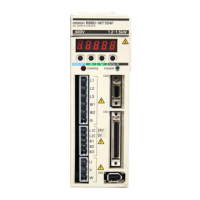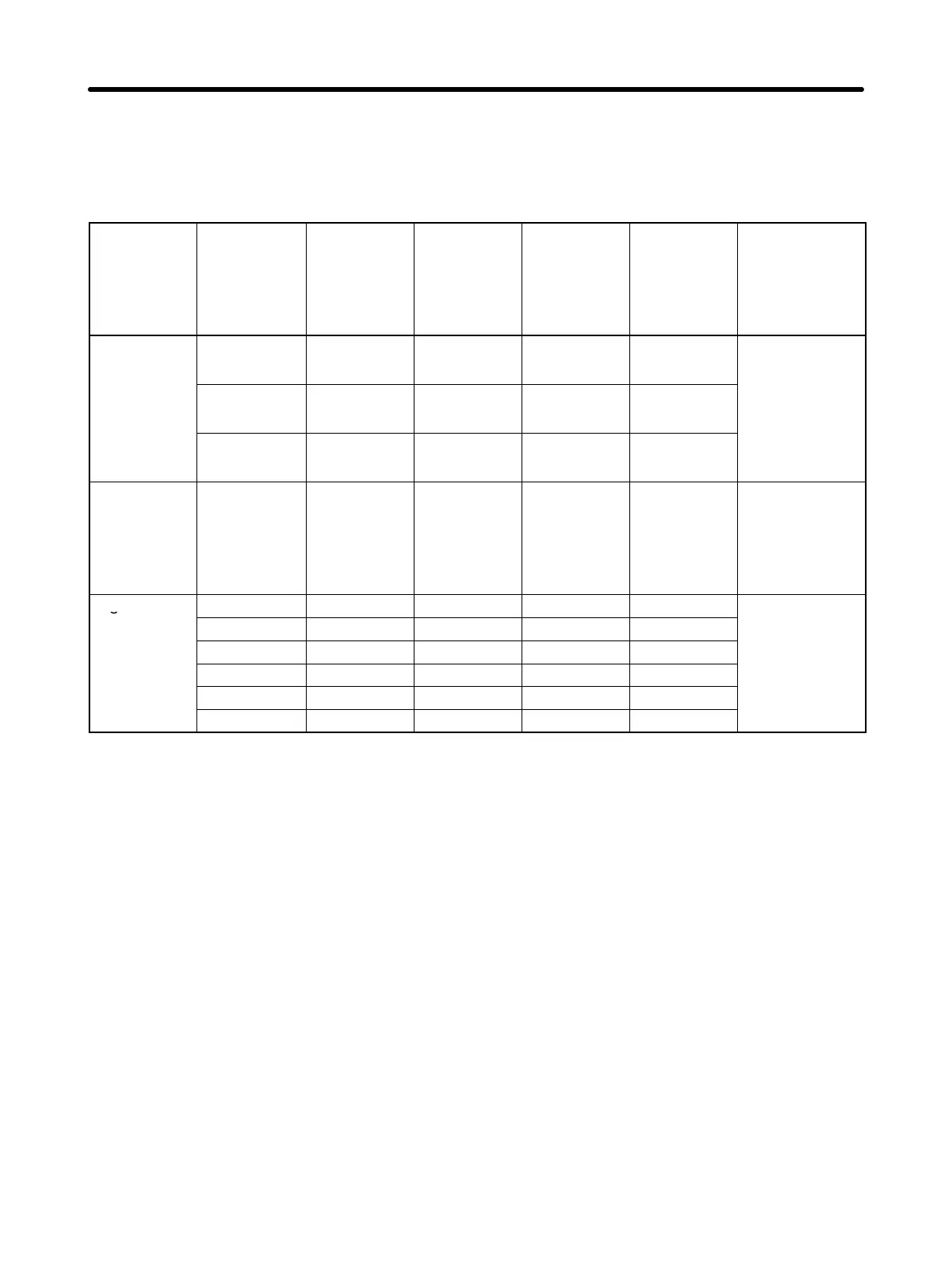4-103
H Selecting Mechanical Rigidity During Online Auto-tuning (Fn001)
• Setting the rigidity during online auto-tuning sets the servo system’s target speed loop gain and posi-
tion loop gain.
• Select the rigidity setting (Fn001) from the following 10 levels to suit the mechanical system.
Response Rigidity
setting
Fn001
(d.00jj)
Position
loop gain
(S
–1
)
Pn102
Speed loop
gain
(Hz)
Pn100
Speed loop
integration
time
constant
(x 0.01 ms)
Pn101
Torque
command
filter time
constant
(x 0.01 ms)
Pn401
Representative
applications
(mechanical
system)
Low
01 15 15 6000 250
Articulated
robots,
02 20 20 4500 200
drives, chain
drives, belt
03 30 30 3000 130
drives, rack and
pinion drives,
etc.
Medium 04 40 40 2000 100 XY tables, Car-
tesian-coordi-
nate robots,
general-pur-
pose machin-
ery, etc.
High
05 60 60 1500 70
Ball screws
06 85 85 1000 50
(direct
07 120 120 800 30
coup
ng
,
08 160 160 600 20
,
.
09 200 200 500 15
10 250 250 400 10
Note 1. The servo-system loop gain will rise in response to a higher rigidity setting, shortening posi-
tioning time. If the setting is too large, however, the machinery may vibrate, so make the set-
ting small.
Note 2. When setting the rigidity, the user parameters in the above table will change automatically.
Note 3. If you enable auto-tuning without setting the rigidity, the user parameter settings (Pn102,
Pn100, Pn101, and Pn401) will be used as the tuning target values.
Operation Chapter 4

